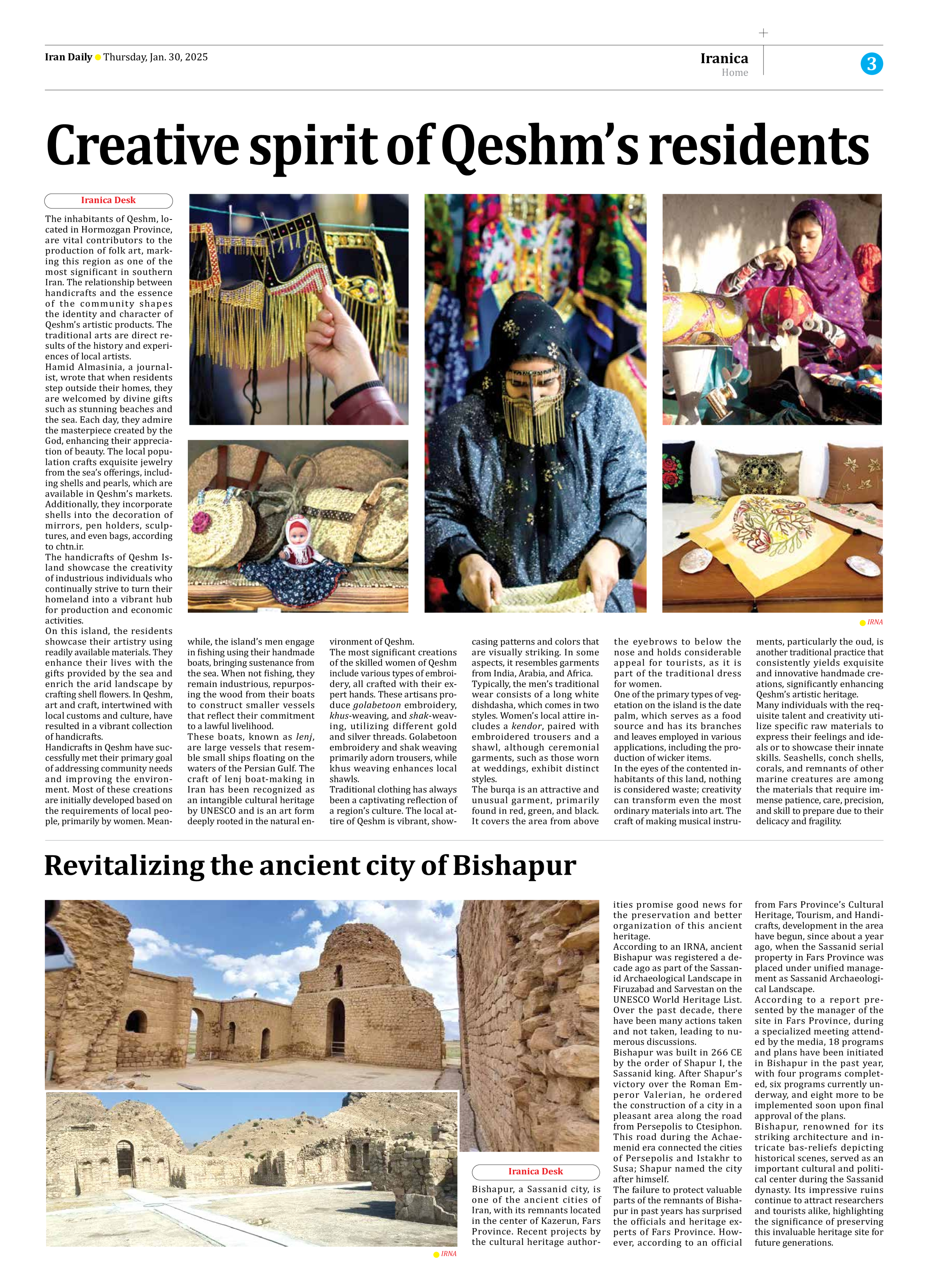
Creative spirit of Qeshm’s residents
The inhabitants of Qeshm, located in Hormozgan Province, are vital contributors to the production of folk art, marking this region as one of the most significant in southern Iran. The relationship between handicrafts and the essence of the community shapes the identity and character of Qeshm’s artistic products. The traditional arts are direct results of the history and experiences of local artists.
Hamid Almasinia, a journalist, wrote that when residents step outside their homes, they are welcomed by divine gifts such as stunning beaches and the sea. Each day, they admire the masterpiece created by the God, enhancing their appreciation of beauty. The local population crafts exquisite jewelry from the sea’s offerings, including shells and pearls, which are available in Qeshm’s markets. Additionally, they incorporate shells into the decoration of mirrors, pen holders, sculptures, and even bags, according to chtn.ir.
The handicrafts of Qeshm Island showcase the creativity of industrious individuals who continually strive to turn their homeland into a vibrant hub for production and economic activities.
On this island, the residents showcase their artistry using readily available materials. They enhance their lives with the gifts provided by the sea and enrich the arid landscape by crafting shell flowers. In Qeshm, art and craft, intertwined with local customs and culture, have resulted in a vibrant collection of handicrafts.
Handicrafts in Qeshm have successfully met their primary goal of addressing community needs and improving the environment. Most of these creations are initially developed based on the requirements of local people, primarily by women. Meanwhile, the island’s men engage in fishing using their handmade boats, bringing sustenance from the sea. When not fishing, they remain industrious, repurposing the wood from their boats to construct smaller vessels that reflect their commitment to a lawful livelihood.
These boats, known as lenj, are large vessels that resemble small ships floating on the waters of the Persian Gulf. The craft of lenj boat-making in Iran has been recognized as an intangible cultural heritage by UNESCO and is an art form deeply rooted in the natural environment of Qeshm.
The most significant creations of the skilled women of Qeshm include various types of embroidery, all crafted with their expert hands. These artisans produce golabetoon embroidery, khus-weaving, and shak-weaving, utilizing different gold and silver threads. Golabetoon embroidery and shak weaving primarily adorn trousers, while khus weaving enhances local shawls.
Traditional clothing has always been a captivating reflection of a region’s culture. The local attire of Qeshm is vibrant, showcasing patterns and colors that are visually striking. In some aspects, it resembles garments from India, Arabia, and Africa.
Typically, the men’s traditional wear consists of a long white dishdasha, which comes in two styles. Women’s local attire includes a kendor, paired with embroidered trousers and a shawl, although ceremonial garments, such as those worn at weddings, exhibit distinct styles.
The burqa is an attractive and unusual garment, primarily found in red, green, and black. It covers the area from above the eyebrows to below the nose and holds considerable appeal for tourists, as it is part of the traditional dress for women.
One of the primary types of vegetation on the island is the date palm, which serves as a food source and has its branches and leaves employed in various applications, including the production of wicker items.
In the eyes of the contented inhabitants of this land, nothing is considered waste; creativity can transform even the most ordinary materials into art. The craft of making musical instruments, particularly the oud, is another traditional practice that consistently yields exquisite and innovative handmade creations, significantly enhancing Qeshm’s artistic heritage.
Many individuals with the requisite talent and creativity utilize specific raw materials to express their feelings and ideals or to showcase their innate skills. Seashells, conch shells, corals, and remnants of other marine creatures are among the materials that require immense patience, care, precision, and skill to prepare due to their delicacy and fragility.







